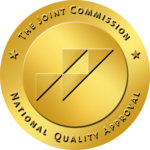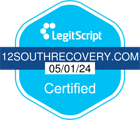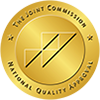Opioid addiction is a serious issue affecting millions of people around the world, but fortunately, there are effective treatments to help those struggling with dependency. One such treatment is Suboxone, a prescription medication that plays a crucial role in opioid addiction recovery. Suboxone works by easing withdrawal symptoms and reducing cravings, allowing individuals to regain control of their lives.

What is Suboxone?
Suboxone is a medication that combines two active ingredients: buprenorphine and naloxone. Buprenorphine is a partial opioid agonist, meaning it partially activates opioid receptors in the brain but produces less euphoria than full opioids like heroin or prescription painkillers. Naloxone is an opioid antagonist, which helps prevent misuse of the medication by blocking the effects of opioids if Suboxone is injected or misused.
Suboxone is commonly used as part of a Medication-Assisted Treatment (MAT) program for opioid addiction. It helps reduce withdrawal symptoms and cravings, making it easier for individuals to manage their addiction and work towards recovery. Unlike other opioids, Suboxone has a lower risk of abuse, making it a safer option for long-term treatment.
How Does Suboxone Work?
Suboxone works by interacting with the brain’s opioid receptors in a safer and more controlled manner compared to drugs like heroin or prescription opioids. Buprenorphine, the primary ingredient in Suboxone, binds to these receptors, reducing cravings and withdrawal symptoms without creating the intense euphoria that leads to addiction.
Here’s a breakdown of how each component works:
- Buprenorphine: As a partial opioid agonist, buprenorphine activates opioid receptors to a limited extent. This activation helps ease withdrawal symptoms and cravings while minimizing the risk of abuse.
- Naloxone: This component acts as a deterrent for misuse. Naloxone remains inactive when Suboxone is taken as prescribed (orally or sublingually). However, if someone tries to inject Suboxone to get high, naloxone will block the euphoric effects, preventing misuse.
Together, these ingredients help people stay on track with their recovery by addressing the physical symptoms of opioid addiction without fostering further dependence.
Benefits of Suboxone in Addiction Treatment
Suboxone offers several benefits that make it a popular choice in the treatment of opioid addiction. It is widely regarded as a highly effective tool for managing the physical aspects of addiction, helping individuals stay focused on recovery.
- Reduces Cravings: One of the primary benefits of Suboxone is its ability to reduce cravings for opioids significantly. This is crucial for preventing relapse, as intense cravings often lead people back to using drugs.
- Manages Withdrawal Symptoms: Opioid withdrawal can be highly uncomfortable and even dangerous in some cases. Suboxone helps ease these symptoms, making the detox process more manageable.
- Lower Risk of Abuse: The combination of buprenorphine and naloxone helps reduce the risk of Suboxone misuse. While buprenorphine does produce some opioid-like effects, they are much weaker than those of full opioids, and naloxone prevents misuse through injection.
- Supports Long-Term Recovery: By reducing cravings and managing withdrawal, Suboxone allows individuals to focus on other aspects of recovery, such as therapy, counseling, and lifestyle changes. It is often part of a comprehensive treatment plan that addresses both the physical and psychological aspects of addiction.
Potential Side Effects of Suboxone
While Suboxone is generally safe when used as prescribed, like any medication, it can cause side effects. Most side effects are mild, but it’s important to be aware of them before starting treatment.
Common Side Effects:
- Nausea
- Headache
- Dizziness
- Constipation
- Sweating
- Insomnia
Serious Side Effects:
- Breathing problems
- Allergic reactions (such as rash, itching, or swelling)
- Liver problems
- Severe drowsiness
If any serious side effects occur, it is essential to seek medical help immediately. Always consult a healthcare professional if you experience side effects or have concerns about taking Suboxone.
How to Use Suboxone Safely
Suboxone is typically taken as a film or tablet that dissolves under the tongue. It is important to follow your healthcare provider’s prescription instructions carefully to ensure it works effectively and is safe. Never take more than the prescribed dose, and do not stop taking Suboxone suddenly without consulting your doctor, as this can lead to withdrawal symptoms.
Key Safety Tips:
- Follow Prescription Instructions: Always take Suboxone exactly as directed by your doctor. Never increase or decrease your dose without consulting a healthcare professional.
- Avoid Other Opioids: Do not take any other opioids while using Suboxone, as this can lead to dangerous interactions, including overdose.
- Communicate with Your Doctor: Make sure to communicate openly with your doctor about any other medications you are taking, any side effects you experience, or any changes in your health.
- Seek Counseling or Therapy: Suboxone is most effective when combined with counseling and behavioral therapies. It’s not a standalone cure but a tool that can help you manage your addiction while you work on the psychological and emotional aspects of recovery.
Contact Our Team
Suboxone is a powerful tool in the fight against opioid addiction, offering relief from cravings and withdrawal symptoms and making recovery more attainable. When used as part of a comprehensive treatment plan that includes counseling and therapy, Suboxone can significantly improve an individual’s chances of long-term sobriety. If you or someone you know is struggling with opioid addiction, reaching out for help is the first step. At 12 South Recovery, we offer compassionate and effective treatment programs tailored to your needs, including Medication-Assisted Treatment with Suboxone. Contact us today to learn more about how we can help you on your journey to recovery, or share this post with someone who may benefit from it.


















